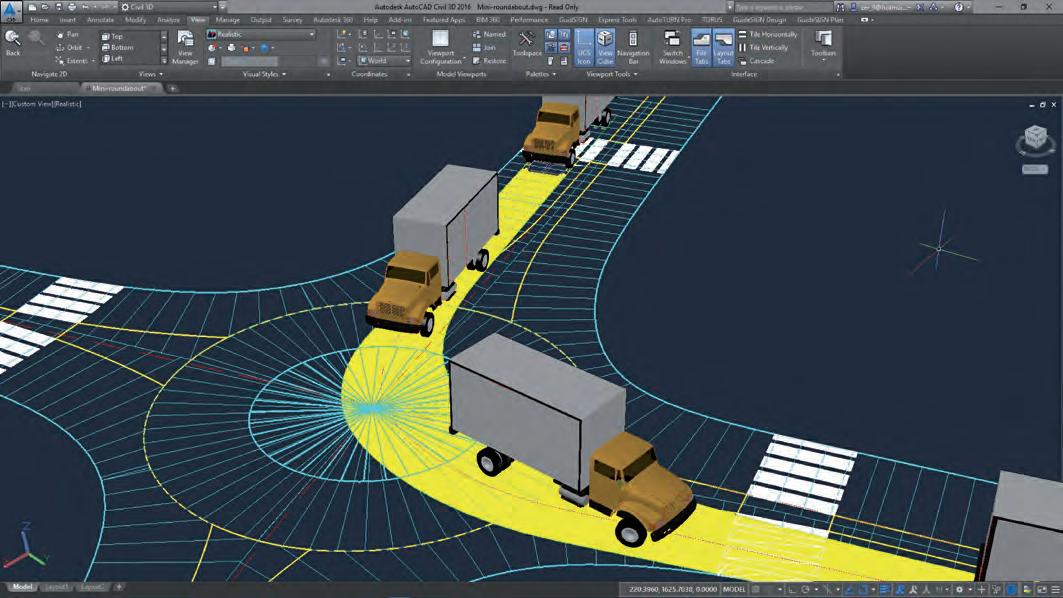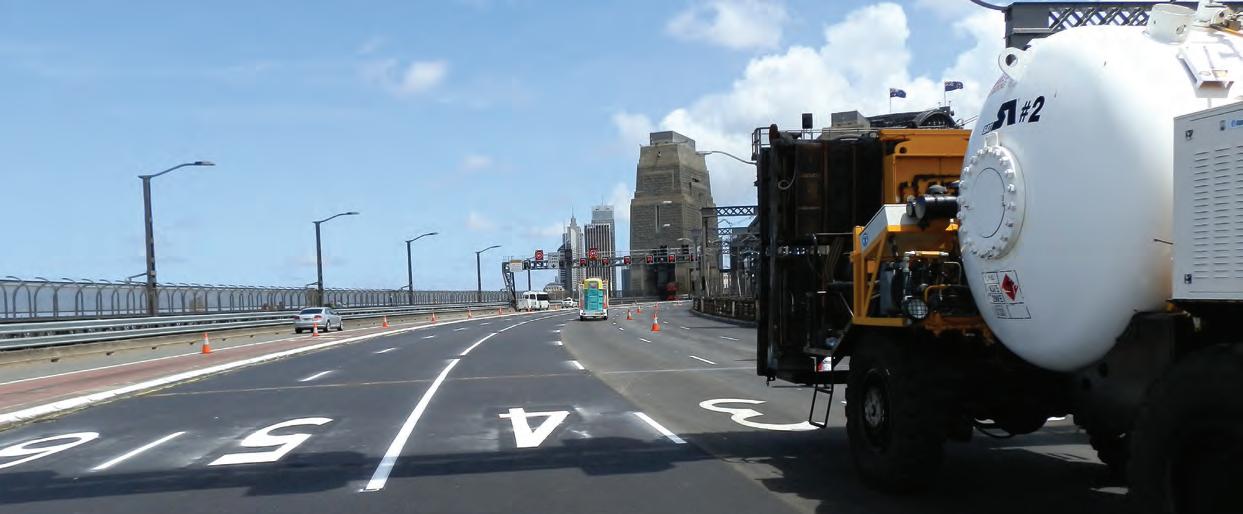
5 minute read
Roundabout revolution
ENGINEERS CAN NOW USE THE NEWEST VERSION OF TRANSOFT SOLUTIONS’ SPECIALISED ROUNDABOUT SOFTWARE TORUS 6.0 TO ANALYSE AND DESIGN NONCIRCULAR ROUNDABOUTS AS WELL AS GENERATE 3D ROUNDABOUT DESIGNS AT THE CLICK OF A BUTTON.
TORUS generates initial roundabout geometry honouring reference criteria.
Some unique road designs in Australia have roundabout features that are adapted to improve traffic flow.
There are dumbbell interchanges, made up of two roundabouts to clearly direct traffic. One is on the Pacific Motorway at Brunswick Heads in NSW and the other is on the Princes Highway near Pakenham in Melbourne.
The Mitchell Freeway, just before the Murray River Bridge, even features a roundabout type interchange called a cloverleaf, a two-level interchange with left turns typically on ramps to ease congestion and increase safety.
To enable road designers and constructors to plan these types of unique interchanges and intersections, Transoft Solutions has
updated its software for roundabout design, TORUS, to include non-circular roundabouts. This is just one of many new features with the release of TORUS 6.0.
TORUS was first launched in 2009 with the basic function to improve the process of designing a roundabout. Since then, the software has consistently evolved. When it was first developed, there were no products for balancing safety, performance and geometrics despite the increased interest in roundabout projects.
Daniel Shihundu, Transoft’s Senior Vice President of Civil and Transportation and a professional engineer with 20 years’ experience, says roundabout design features several competing factors that need to be assessed at the same time.
“You are looking at safety components, performance aspects and the cost [determined by the roundabout size and effect on right-of-way] simultaneously when designing a roundabout, and this is generally a very iterative process,” Mr. Shihundu says.
At a basic level, TORUS generates initial roundabout geometry honouring reference criteria and provides real-time feedback for recommended dimensional and analytical ranges.
The software has a section for design guidelines that features several Austroads roundabout guidelines, including the Austroads single-lane roundabout (50 kilometres per hour) and Austroads two-lane entry (50 kilometres per hour).
“TORUS uses the design methodology
outlined in Austroads guide to road design part 4B and incorporates Austroads 2006 and 2013 design vehicle libraries. This allows the roundabout to be designed based on that criteria. A designer in Australia will just have to select the necessary Austroads design guideline and then modify the roundabout elements and customise it to their needs,” Mr. Shihundu says.
The latest release of TORUS will give users the opportunity to automatically generate roundabout geometry that is non-circular, such as dumbbell or dogbone intersections, which can be useful when faced with rightof-way constraints or increasing safety at intersection crossing points.
TORUS 6.0 also features an improved user interface. Mr. Shihundu says Transoft took feedback directly from major users and stakeholders to improve the software.
“Users identified certain tasks that required a number of steps, so we took that as an opportunity to streamline those processes and make the interface easier to use,” he said.
“Additional to the interface, TORUS’s 3D capabilities allow users to visualise the roundabout components as the design progresses. Traditionally, roundabout design has been done in 2D, and then 3D components were added to provide a realistic picture.”
TORUS 6.0 now provides the designer with an opportunity to confirm the design functions as intended early in the process.
The software uses the patented Vehicle Envelope Method technology, powered by Transoft’s AutoTURN, which remains the industry’s defacto software for vehicle swept path analysis.
“Any vehicles in AutoTURN are now available for use in TORUS. These have been brought over so that designers can test roundabout performance with specific design vehicles,” Mr. Shihundu says.
He says the main benefit for designers when using TORUS 6.0 is the in-built design guidelines and analysis checks, providing immediate user feedback. Other benefits include fastest path, sightlines (or triangles) and vehicle movement evaluation. All these can be modified, and the roundabout geometry is updated dynamically.
“The software has automatic technology that alerts the user when certain parameters related to safety, performance or cost are outside the designer’s chosen range,” Mr. Shihundu says.
For instance, he says, if the entry speeds into the roundabout for vehicles are above the specified value, the designer will be immediately notified and the design can be changed.
“If you were manually designing the roundabout using CAD software, you would have to go back and measure each geometric aspect manually and apply the necessary speed equations to find out where the speeds went too high. But TORUS will give you a notification as well as heads-up table summarising the speeds in each roundabout leg,” Mr. Shihundu says.
When making modifications to the design on TORUS, the computations are automatically regenerated so that the design does not have to be redrawn, saving designers a significant amount of time.
For additional safety analysis in the design phase, TORUS 6.0 allows the user to ensure there are adequate sightlines (sight triangles) on approach and through the roundabout they are designing.
“As a designer, you want to make sure that drivers using the roundabout are able to see the pedestrians and allow enough time to react. In TORUS, you can view the design from that point of view and know whether certain pedestrian crossings are going to be safe,” Mr. Shihundu says.
So far in Australia, Mr. Shihundu is aware of a number of major road authorities and large engineering companies using the software in Australia.
“The power of this software is something we have seen our users appreciate over the years from when we launched the first version,” Mr. Shihundu says.
“In the United States, for example, we have about 25 Departments of Transportation using the product, and I am confident we can get similar bodies in Australia to benefit from the roundabout analysis capabilities of TORUS 6.0.”
The software has automated technology that alerts users when certain parameters related to safety, performance and cost are outside the designer’s chosen range.











